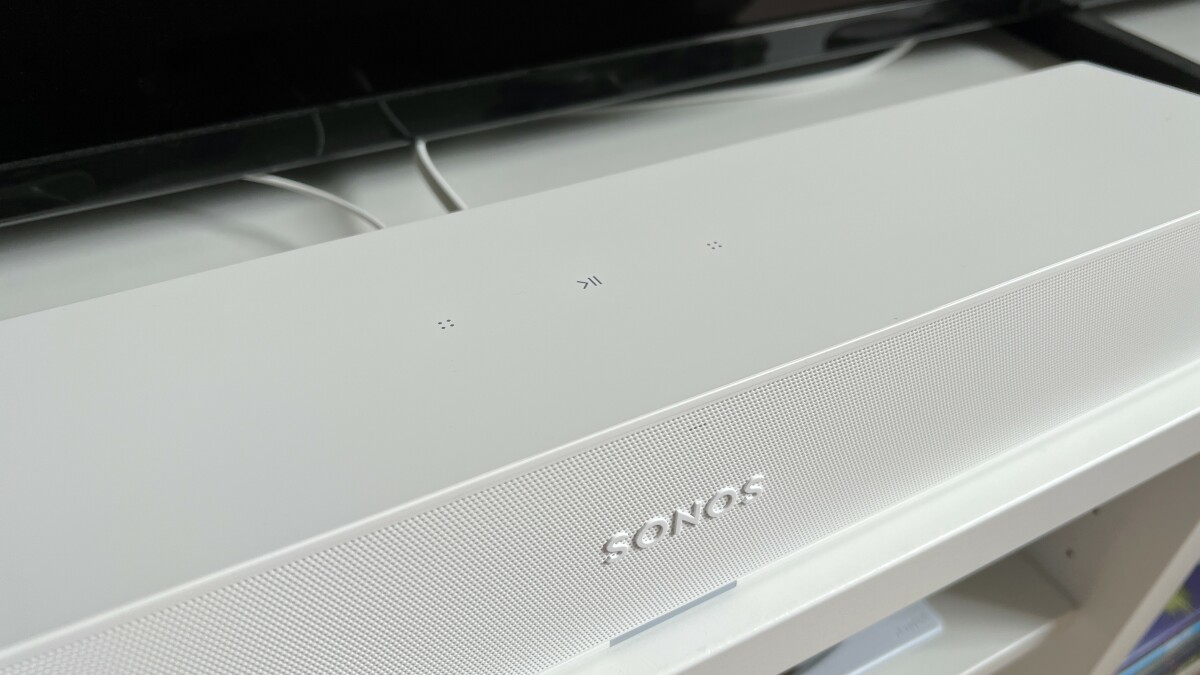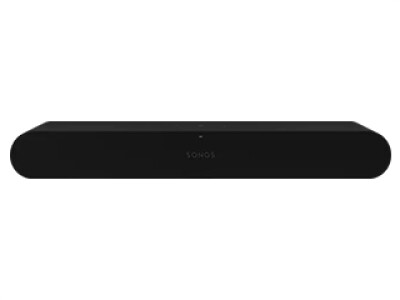The Sonos Ray shows in the test that a decent soundbar does not necessarily have to be expensive. For 299 euros, the compact sound system does a lot right. But there are also disadvantages.
Sonos Ray review
No ratings yet
design and processing
9.0
NETZWELT may receive a commission from the retailer for links on this site. More info.
Compact, loud and sufficient for many
The Sonos Ray does what it promises – the affordable entry into home cinema. Movies and series are really fun with the speaker bar and the sound that comes out of this little thing is amazing. Nice additional functions such as Trueplay, night mode and speech enhancement round off the overall package, not least the option to expand the soundbar with additional speakers. The few connection options and the non-existent Dolby Atmos support are negative. You can listen to music via the soundbar, but the Ray does not replace a real hi-fi system. For many, however, the Sonos Ray should be completely sufficient as a compact sound system for the TV evening.
We liked that
- Compact and simple
- High-quality processed
- Expandable to 5.1 system
- Voluminous sound
- Practical features such as night mode
We didn’t like that
- No Dolby Atmos support
- Few connections
- More suitable for music as a side system
Audio specialist Sonos has launched a new soundbar, which should score particularly well in terms of price. The Sonos Ray is the manufacturer’s third and cheapest soundbar. Compared to the Sonos Beam (499 euros) and Sonos Arc (999 euros), the new model is a real bargain at 299 euros.
The Sonos Ray should score particularly well in small to medium-sized rooms. If you want, you can add additional Sonos speakers to the soundbar, turning it into a fully-fledged 5.1 home cinema or multi-room system. We were able to test the new sound system and describe our impressions of the Sonos Ray below.
Installation and setup
You can either place the Sonos Ray in front of the TV or mount it on the wall using the appropriate bracket. Thanks to its compact dimensions (71 mm x 559 mm x 95 mm), it fits unobtrusively into the room and does not stand out thanks to its simple and timeless look.
The soundbar is available in black and white. So you can decide for yourself which variant suits your interior better. The processing is typical for Sonos at a high level. Although mainly plastic is used, everything is impeccably manufactured.
Tip: On the top, the Sonos Ray has three sensor buttons for control (play/pause, volume and next/previous). If you want to operate the soundbar without a remote control or app, place it so that you can reach the buttons.
Sonos Ray in pictures
In this gallery you can see the Sonos Ray in detail.
Once the Ray has found its place, it needs to be wired. What is immediately noticeable with the inexpensive soundbar is that there is no HDMI connection, nor is there a cinch or Bluetooth. The speaker bar can only be connected to the TV using an optical audio cable.
You should therefore check before you buy whether your TV or projector has the appropriate audio output – this is not always the case. In addition to the optical input, only a power and LAN connection are available.
The next step is to set it up using the Sonos app. This is extremely easy to do and can be completed in just a few minutes. If you don’t use a LAN connection, the soundbar can be easily integrated into your home WLAN during commissioning. Since the Ray does not come with a remote control, the TV can be taught and then used for the soundbar – practical.
Within the app you will also find Sonos Radio, a streaming service that you can use to stream music when you are not watching TV. However, the free version is somewhat limited (no skipping songs, less content, and no HD audio). In addition, all well-known music services are supported, including Apple Music, Amazon Music, Deezer, Spotify and many more. Alternatively, you can stream music locally from your cell phone via WiFi or AirPlay 2.
Hearing test: This is how the Sonos Ray sounds
When you see the Sonos Ray for the first time, you certainly don’t expect too much from the sound, especially since no external subwoofer is included. In practice, however, the soundbar quickly convinces you of the opposite. The sound system significantly enhances the television experience.
The sound is voluminous, the bass is strong enough – but of course nothing compared to a separate subwoofer. Watching movies and series is really fun with the Ray. It’s a huge difference compared to the speakers built into TVs.

You can also stream music via the Sonos app, for example via Sonos Radio. (Source: Sonos)
Two special sound modes that are really useful in everyday life can be used via the Sonos app. On the one hand there is the “night sound”, which improves quiet sounds at low volume and dampens loud sounds. If you have neighbors or sleeping children, you can use it.
On the other hand, there is a voice improvement mode that lowers the bass and makes dialogue easier to understand. Both options work well in practice. If you want even more sound, you have the option of expanding the Ray with additional Sonos speakers to form a 5.1 system. Sonos One (including SL), Sonos Five, Play:1, Play:3, Play:5 (Gen. 2) and Sonos Sub are compatible.
Listening to music with the Sonos Ray? In my opinion, this works well, but more for the sound reinforcement on the side. Anyone who consciously sits down and wants to listen to their favorite album in the highest quality should use a real hi-fi system, if only because of the additional connection options (headphones, CD player, etc.). I personally miss the brilliance, the sharp highs and booming bass – but it’s primarily a soundbar for use on the TV set.
However, the sound system is ideal for a living room party with friends, background music on a game night or a short dance to Shake Your Body by the Jackson 5. Even at high volume, the sound remains good, there is no clinking, distortion, and no clipping.
Trueplay, Dolby Atmos, voice control
If you have an iPhone (iOS 8 or higher), you can use Trueplay to improve the sound of the Sonos Ray. The cellphone’s microphone is used to measure the sound at different points in the room and then adjust it. This ultimately results in a clearer sound – and it really works.

The music can be controlled via the sensor buttons if the remote control or mobile phone are not at hand. (Source: Netzwelt)
True home theater fans, on the other hand, may be disappointed with one thing: there is no Dolby Atmos support. Only Stereo PCM, Dolby Digital 5.1 and DTS Digital Surround are available.
What is also missing is voice control via Alexa, Google and Co. You can only use Siri via the Apple device when content is played back via AirPlay.
Technical data at a glance
Below you will find an overview of all important data about the Sonos Ray.
| Technical specifications | |
|---|---|
| Dimensions | Height: 71mm | Width: 559mm | Depth: 95mm |
| weight | 1.95kg |
| Colours | Black-and-white |
| speaker | 2 tweeters, 2 midrange drivers, bass reflex system, four class D digital amplifiers |
| Home Theater Audio Formats | Stereo PCM, Dolby Digital 5.1 and DTS Digital Surround |
| connectivity | WLAN 802.11b/g/n, optical audio input, infrared receiver, Ethernet (10/100), AirPlay 2 |
| Price (RRP) | 299 euros |
Sonos Ray – Specifications
Sonos Ray

No ratings yet
design and processing
9.0
NETZWELT may receive a commission from the retailer for links on this site. More info.
Sonos Ray: The best alternatives
Don’t you agree? Are you looking for suitable alternatives? Below are the best Sonos Ray alternatives. You can find an even more comprehensive list in our speaker overview.
Don’t miss anything with the NETWORK-Newsletter
Every Friday: The most informative and entertaining summary from the world of technology!
